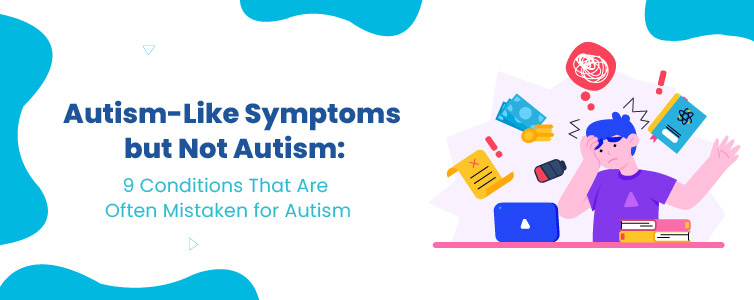Autism Spectrum Disorder (ASD) is a developmental condition that affects social interaction, communication, and behaviour.
With increasing awareness of autism, many parents and healthcare providers are quick to recognize early signs of the disorder in children.
It's critical to remember that while symptoms of many diseases can mimic those of autism, they are not the same. If a diagnosis is established too late or not well enough, it may be more difficult to receive the right treatment.
This article looks at nine disorders with symptoms similar to autism but distinct underlying causes.
Understanding these distinctions can help caregivers and professionals better assess developmental and behavioural concerns in children and adults.

Symptoms Similar to Autism: OCD involves repetitive behaviours, obsessive thoughts, and compulsive actions, which can closely resemble some of the repetitive behaviours seen in autism.
Both illness states have the potential to make a person repeat sentences, organise objects, or wash their hands constantly.
Principal Disparities: The emotions connected to these activities are the primary difference between OCD and autism. When their compulsions prevent them from carrying out their routines, OCD sufferers often worry and get upset.
In contrast, people with autism often find comfort in repetitive behaviours and may not be bothered by them.
Moreover, OCD is a mental health condition that can appear at any age, while autism typically manifests in early childhood.
Treatment: OCD can often be managed with cognitive-behavioural therapy (CBT) and medications such as selective serotonin reuptake inhibitors (SSRIs).
Autism, however, requires long-term therapies focused on improving social communication and managing behavioural challenges.
The symptoms of SPD and autism are similar in that both conditions are characterised by problems with the processing of sensory data, including light, sound, touch, and texture.
Children with both SPD and autism may exhibit over- or under-sensitivity to sensory stimuli, such as covering their ears in loud environments or avoiding certain textures.
Many conditions can present with symptoms that resemble autism, leading to potential misdiagnosis or confusion. Understanding the differences between these conditions is essential for accurate diagnosis and treatment.
If you are concerned about developmental or behavioural issues in a child or adult, it’s important to consult healthcare professionals for comprehensive evaluation and appropriate interventions.
By recognizing the key differences between autism and conditions like OCD, ADHD, PTSD, and others, caregivers can better advocate for the most suitable care plans, ensuring that individuals receive the support they need to thrive.